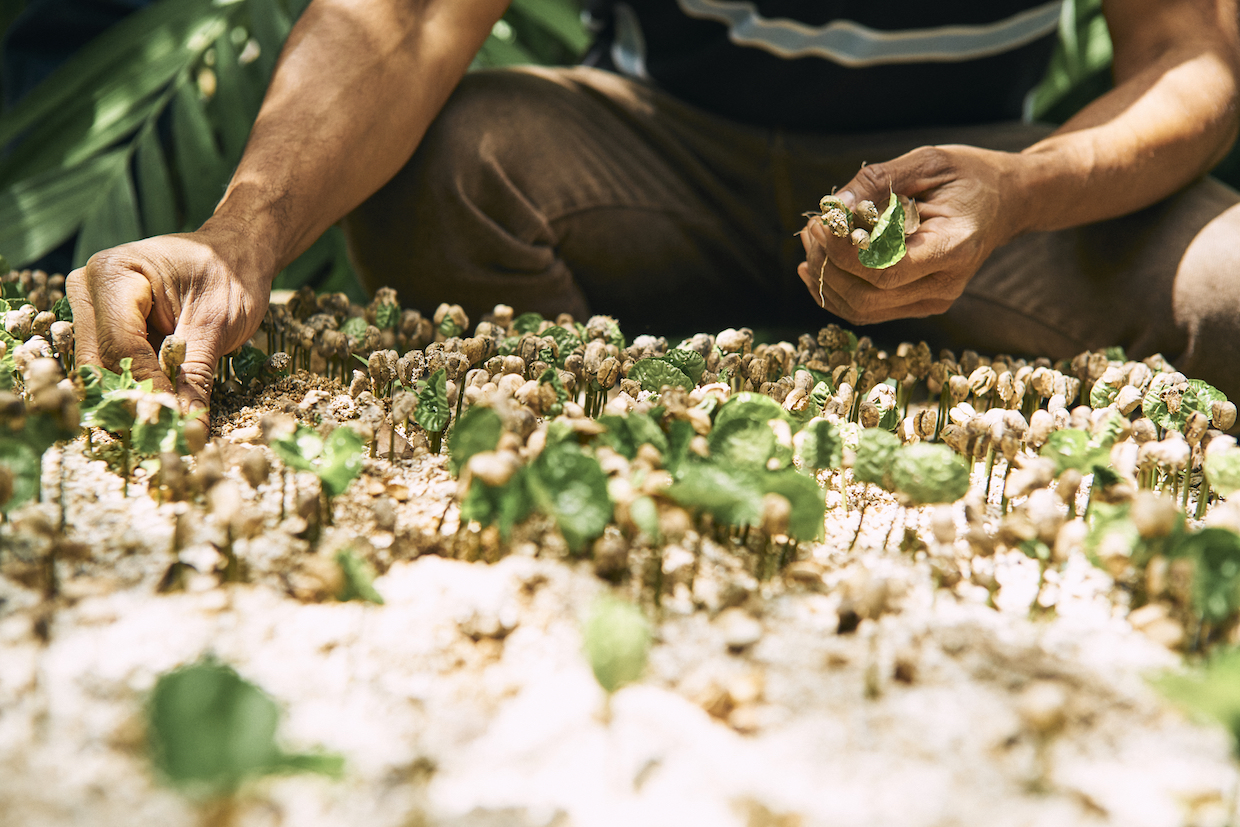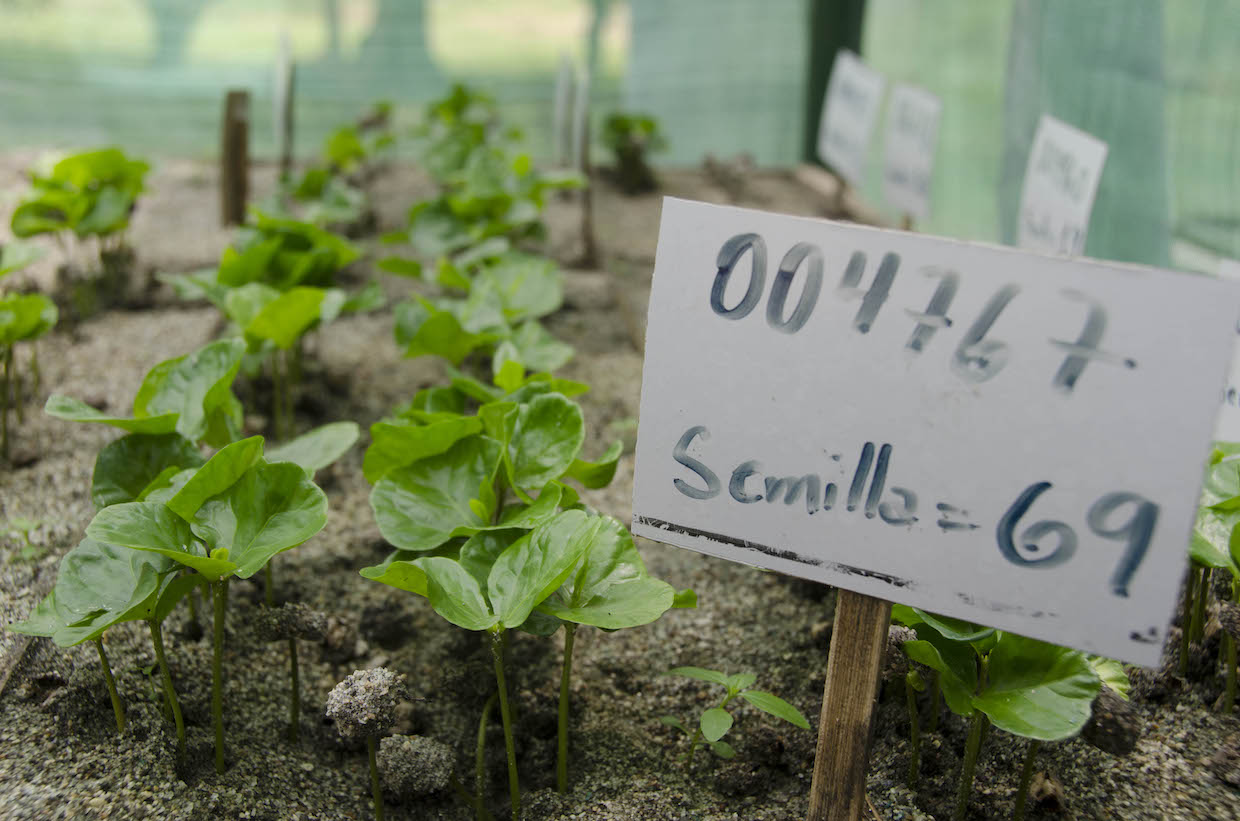
Seedlings at the Rocael Vasquez residence. Photo by Devon Barker (@devonbbarker), courtesy of World Coffee Research.
While abundant resources are directed to the cup end of coffee’s seed-to-cup journey, much less coordinated attention has been paid to the seed end.
That chasm has been significantly narrowed with the release of two new guides from the pioneering nonprofit World Coffee Research that address what the organization calls a “hidden crisis” in the coffee sector: a lack of adequate systems throughout the coffee-growing world towards delivering high-quality, healthy seeds and seedlings to farmers.
“With each poor-quality seedling planted in their fields, farmers lock in lower production potential for decades to come,” WCR CEO Vern Long said in an announcement of the release of the guides, adding, “and this powerfully reinforces the ‘poverty trap’ faced by smallholder farmers in particular. Improving nursery production practices has the potential to dramatically improve the productivity and profitability of coffee farms globally and to ensure that the genetic gains coming from new/improved varieties are able to reach farmers.”

Dr. Francisco Anzueto (WCR Scientific Coordinator – Central America) walks through seedlings in the shade. Photo by Devon Barker (@devonbbarker), courtesy of World Coffee Research.
The guides are available in English- and Spanish-language versions and are free to download and share through an open-access license, with one outlining good practices for seed production and the other outlining good practices for nursery management. A partner in the guild project, the Latin American research institute Promecafe will be promoting its distribution.
Not only do the guides help give nurseries tools to improve their production practices in order to deliver healthier, higher-producing and longer-living seedlings, they focus on traceability, an aspect designed to give farmers more confidence that they are planting the exact coffee varieties of their choice, without cross-pollination. WCR is urging producers and nurseries to use the guides as a companion to the group’s groundbreaking Arabica Coffee Varieties Catalog
.
While certainly a boon to farmers, the guides can be potentially beneficial to the coffee industry as a whole through the strengthening of supply chains by reducing farmer risk and minimizing unexpected production losses.
WCR said that its own research in “multiple countries” has shown that most countries in the world are not able to deliver high-quality seedlings to all farmers.

Baby coffee plants from the Core Collection (100 genetically diverse arabica coffees from the CATIE seed bank). Photo courtesy of World Coffee Research.
“There are no global figures available, but country studies have demonstrated that it is not uncommon for upwards of 50% of coffee trees produced by nurseries — especially small, informal ones — to die before or soon after they are transplanted to the field,” WCR stated in the launch announcement. “Many of the seedlings that do reach farmer fields are weak, low yielding, and prone to disease.”
Both guides are available for download here.
Nick Brown
Nick Brown is the editor of Daily Coffee News by Roast Magazine.
Comment
2 Comments
Comments are closed.






Thanks to adding about coffee value chain
I need daily coffee marketing and value chainn